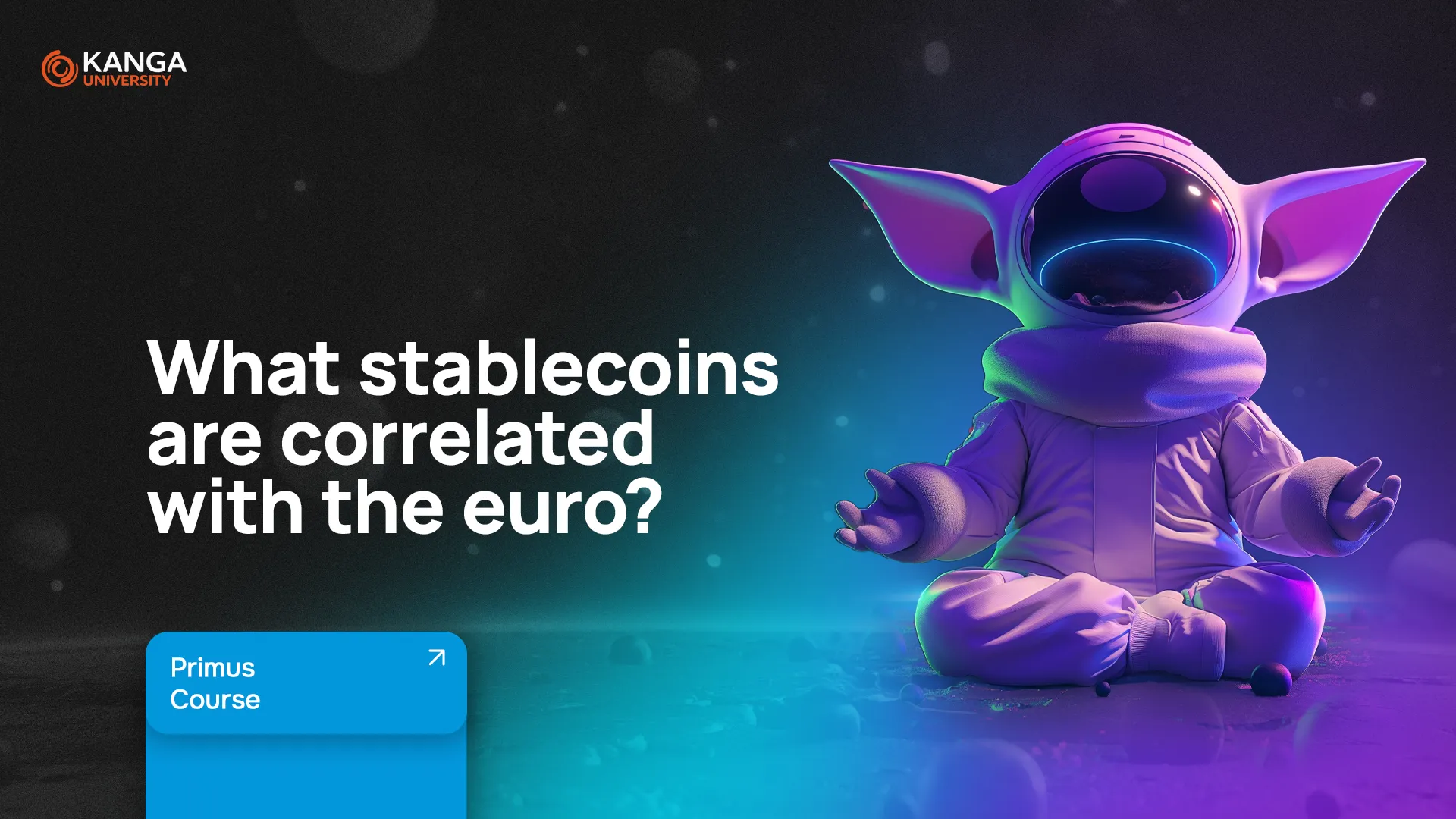
Stablecoins are cryptocurrency tokens whose value is maintained at a fixed ratio to a designated asset, usually a fiat currency. In the case of euro‐stablecoins, the goal is to keep a 1:1 rate against the euro, protecting holders from the high volatility typical of Bitcoin or other popular cryptocurrencies. Below is the current status of these tokens as of June 3, 2025.
Key euro-stablecoins (as of June 3, 2025)
-
Stasis Euro (EURS)
-
Issued since June 2018 by the Lithuanian firm Stasis as an ERC-20 token.
-
Every EURS unit is backed 1:1 by one euro held in reserve.
-
Listed on many exchanges (Bitfinex, DDEX, IDEX, HotBit, 1inch, Indodax).
-
In mid-2024, Stasis obtained the status of a European Electronic Money Institution (EMI), boosting institutional trust.
-
-
Tether EUR (EURt)
-
Launched in 2016 by Tether as the euro equivalent of USDT, but backed 1:1 by euros.
-
Reserves are held by Tether in European bank accounts.
-
Traded on Bitfinex, Bitstamp, Uniswap, 1inch, Kraken.
-
In February 2025, an audit confirmed full reserve coverage in European banks.
-
-
Synthetix EUR (sEUR)
-
Launched in December 2018 by the Synthetix protocol.
-
sEUR tracks euro pricing via decentralized oracle feeds; collateral includes SNX and ETH.
-
Minted within Synthetix’s synthetic-asset ecosystem and mainly used in DeFi to create synthetic euro positions.
-
In Q1 2025, Synthetix released an upgraded oracle mechanism, improving price accuracy by over 30%.
-
-
Parallel (PAR)
-
The first fully decentralized, algorithmic euro-stablecoin, launched in May 2021.
-
Stability is maintained via smart-contract mechanisms and collateral locked in the Mimo DeFi protocol.
-
PAR is used for borrowing and lending in euro-stablecoin pairs.
-
Available on Bittrex, Balancer, and 1inch; market capitalization has grown by over 50 % since early 2025.
-
-
Celo Euro (cEUR)
-
Part of the Celo ecosystem, launched in 2021.
-
Backed by reserves in the Celo Reserve Fund plus additional assets (e.g., BTC and ETH).
-
Traded on KuCoin, Ubeswap, and other Celo-based DEXs.
-
In 2025, Celo introduced a “stable swap” feature that reduced average slippage by 40 % on large transactions.
-
-
EURCoinVertible (EURCV)
-
The first MiCA-compliant euro-stablecoin, issued in April 2023 by SG-FORGE (Societe Generale – FORGE).
-
Reserves are held 1:1 in euros at European banks (including Société Générale), with audits performed by KPMG.
-
Since June 2025, distributed in partnership with Societe Generale and Banque de Commerce et de Banque (BCB); available on the Stellar network and supported by select DeFi wallets.
-
-
EURØP
-
The first euro-stablecoin fully compliant with MiCA on the XRP Ledger, launched May 22, 2025 by Schuman Financial (a licensed EMI in France).
-
Reserves are held 1:1 in euros at European banks and audited regularly by Mazars.
-
Designed for DeFi use, tokenization of real-world assets (e.g., bonds or real estate), and fast B2B/B2C payments.
-
At launch, supported by EUR payment gateways, enabling direct conversion between EURØP and bank accounts.
-
Upcoming and Planned Projects
-
DWS / AllUnity (planned late 2025)
A consortium of DWS (Deutsche Bank’s asset-management division), Flow Traders, and Galaxy Digital is developing a BaFin-regulated euro-stablecoin. Scheduled for launch in the second half of 2025, it will be fully fiat-collateralized (1:1) in euros and MiCA-compliant. -
ING (prototype phase since Q2 2025)
ING is collaborating with other EU banks to create an EU-regulated euro token. The project aims for full integration with the SEPA payments system under MiCA rules. -
Banco Santander (concept phase from May 2025)
Banco Santander has begun preliminary consultations with the European Banking Authority (EBA) to issue its own euro-stablecoin. The project is expected to launch in 2026, pending an EMI license.
Key Features of euro-stablecoins
-
1:1 Exchange Rate
Each token is backed by one euro held in reserve or by equivalent collateral. Reserves may be in fiat bank deposits (EURS, EURt, EURCV, EURØP) or crypto assets/other collateral (sEUR, PAR, cEUR). -
Uses in Payments and Remittances
– Enable faster, cheaper international transfers in euros compared to traditional banking rails.
– Allow 24/7 settlement without waiting for bank-processing windows. -
Exchange Trading
– Protect trading positions from Bitcoin’s or Ethereum’s volatility.
– Common trading pairs include PAR/EUR, cEUR/CELO, and EURS/BTC on various DEXs and CEXs. -
DeFi and Lending
– Synthetix allows users to borrow in euros via sEUR, while Mimo DeFi enables PAR as collateral.
– cEUR powers smart contracts on the Celo network for staking, liquidity mining, and other yield opportunities. -
Real-World Asset Tokenization
– Euro-stablecoins serve as reference pairs when tokenizing government bonds, real estate, or other physical assets.
– Platforms like EURØP on the XRP Ledger facilitate issuance and management of digital corporate bonds settled in EURØP.
Industry Challenges (June 3, 2025)
-
Regulatory Compliance and Licensing
MiCA requires issuers to obtain an EMI license and meet strict reserve, reporting, and audit requirements. Some projects (e.g., EURCV, EURØP) have secured these approvals; others are still in the licensing process. -
Competition from Dollar-Pegged Stablecoins
USDT and USDC continue to dominate global liquidity. Euro tokens must compete for trading volume and liquidity, especially since many institutions prefer USD‐denominated pairs. -
Securing Banking Partnerships
European banks remain cautious about crypto. Negotiating reserve accounts took time for EURCV and EURØP, delaying their rollouts. -
User and Institutional Adoption
Although awareness is growing, euro-stablecoins still have lower volumes than their dollar counterparts. Institutions only began actively experimenting after MiCA went into effect in June 2024.
Summary
As of June 3, 2025, the primary euro-stablecoins are EURS, EURt, sEUR, PAR, cEUR, EURCV, and EURØP. Each differs in its collateral model (bank deposits vs. crypto collateral), degree of decentralization, and exchange listings. With upcoming launches from DWS / AllUnity, ING, and Santander, the European euro-stablecoin market is set to become more competitive and feature-rich. Even though USD-stablecoins still dominate, the rising demand for euro-pegged tokens in trading, DeFi, and cross-border payments suggests their importance will continue to grow.